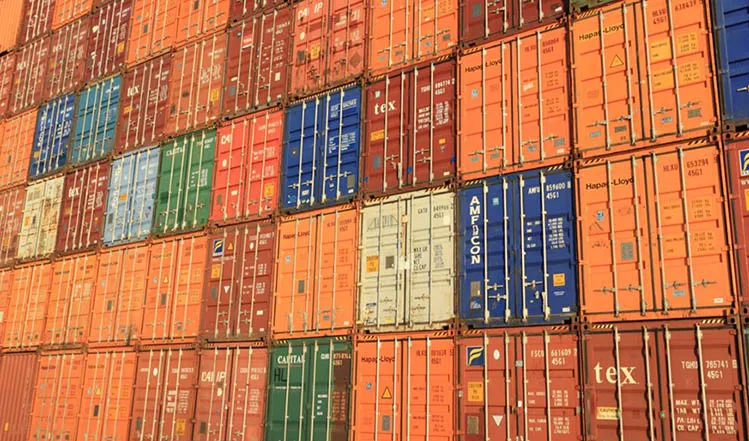Quick access
Freight shipping containers are the main part of the sea and air freight forwarding. These are designed so that you can move any good with them. Also, choosing the most suitable one for the goods is very effective in safety and freight costs. Working with a freight forwarder company will help you a lot in this regard. Our experts will choose the best one for you by knowing the details of all containers and evaluating your good. Here we talk about sea freight containers and air freight ones.
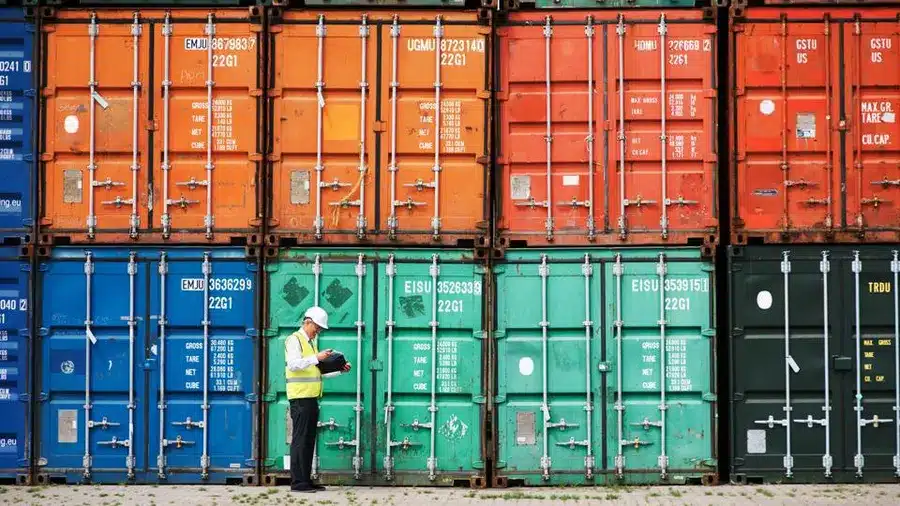
What is Shipping Container Shipping?
Shipping containers are a means of transporting goods using large, standard-sized containers. The containers are specially designed for easy movement, with an appreciably minimal number of handling steps from one mode of transport to another, such as from ship to truck or train, without unpacking the container. This makes the shipping process so much more efficient.
The most significant benefit of container shipping is security. Since the containers are sealed and strong, they resist any sort of damages or robbery during shipment. They generally come in standard sizes such as 20 or 40 feet in length, hence providing huge convenience in stacking and storing at ships and ports.
Container shipping has revolutionized international trade by enabling firms to send everything from electronic components to foodstuffs across both ocean and land with speed and security. Starting at one port, cargo is first loaded into containers that are then placed onto cargo ships. When they reach their destination, they can be moved onto trucks or trains for delivery.
The container shipping industry has greatly facilitated international trade and brought down shipment costs, thus allowing economies to grow and helping consumers all over the world to have access to merchandise.
What Are Freight Shipping Containers?
A freight shipping container is a standardized reusable steel box used in the transportation of freight by sea, road, and rail. They move in different sizes, with the most common being 20-foot and 40-foot containers. Containers are well-designed to make cargo move efficiently and further protect it from various elements of weather and any form of damage during transit.
Freight containers are able to carry very diverse products, ranging from raw materials to finished goods. International trade is highly dependent on them because of the uniformity they have for stacking and handling to optimize space and, accordingly, shipping costs. Other than that, most of the containers have additional features, such as refrigeration to keep perishable goods fresh, or ventilation for bulk cargo.
Overall, freight shipping containers are those helpful units in the logistics industry that make it possible to transport goods easily and safely to reach their respective destinations on time.
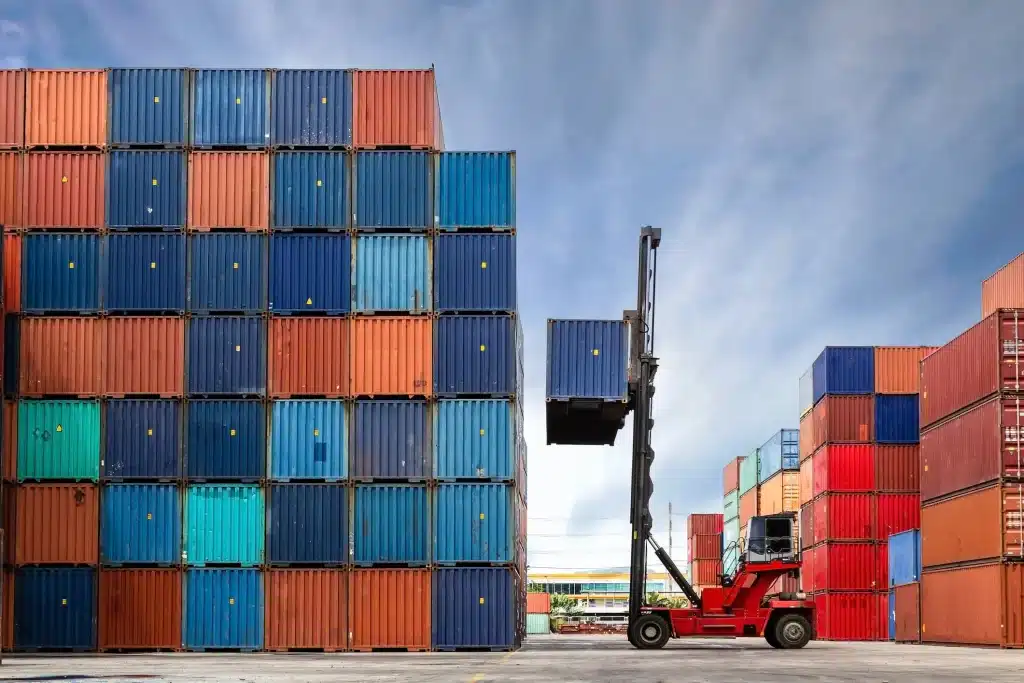
Importance of Freight Shipping Containers in Global Trade
The shipping containers have become very critical in international trade for several reasons. First, it standardized the transportation process in such a way that on every mode of transport shipped, whether by truck, train, or ship, loading and unloading and even stacking become very efficient. This standardization reduces handling time, thus reducing costs, and hence makes trade accessible.
They also protect goods from environmental factors and breakage in transit, ensuring that products arrive in good condition. This in turn creates trust among trading partners and propels international business.
Among others, containerization enhances the mobility of products-from heavy raw materials to light consumer goods-facilitating various industries. They also facilitate just-in-time inventory practices, enabling companies to handle costs efficiently and respond promptly to market demand.
Types of Containers for Shipping
Standard Shipping Containers
Standard cargo containers are large, heavy steel boxes that are used in shipping merchandise by water, road, and rail. They are standard-sized containers and must not exceed a certain weight limit to accommodate shipping infrastructure around the world. Most of the used containers measure 20 and 40 feet, respectively. These standard sizes have been designed in such a way as to maximize space and efficiency.
Weather-resistant, secure, and protecting cargoes from environmental damage in transit, these containers are uniformly designed to make stacking and handling easier, thus the processes of loading and unloading more efficient. Standard shipping containers are a significant element in international trade, as they move an array of products efficiently and safely around the world.
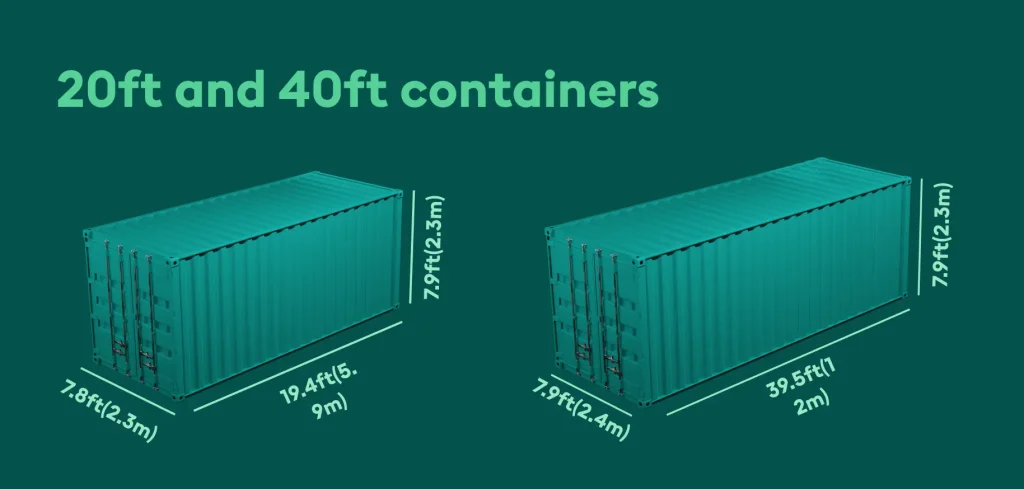
20-Foot Containers
These include the standard 20-foot containers, the length of these being 20 feet while width and height are 8 and 8.5 feet, respectively. The average payload normally should not exceed roughly 28,000 pounds, maximum. They will be just perfect for smaller shipments; hence, these are preferred for those businesses whose needs for shipment do not call upon requiring the space for a 40-foot container.
Being compact, they are easy to handle and stack, and can maneuver well through highly congested areas, such as cities or small ports. The 20-foot container is a versatile container suited for several types of cargo, which includes electronics, furniture, and even perishable cargo, provided the container is fitted with refrigeration. In summary, they are very vital in international trade logistics.
40-Foot Containers
40-foot containers: These are larger cargo containers used for shipping goods, measuring a length of 40 feet, a width of 8 feet, and a height of 8.5 feet. The maximum payload capacity for this type of container is usually around 56,000 pounds, which enables larger shipments to be transported.
These containers can avail huge space for storage, carrying every type of goods from industrial equipment to consumer products. Their size allows such containers to load and unload efficiently, which at times cuts shipping costs per unit compared to smaller containers.
Standard dimensions of 40-foot containers guarantee that they can be so easily integrated with other infrastructures around the world that it is widely applied in international trade. Besides, they also can be adjusted according to some particular demands. For example, some perishable items require refrigeration on containers, which further expands their application in logistics.
High Cube Containers
High Cube Containers are the extended version of standard shipping containers, with their length usually 40 feet or 45 feet, with increased height at 9.5 feet. This further allows an additional one foot in vertical space when compared to a standard container to accommodate more cargo capacity.
High Cube containers are applicable for bulky cargo or volume maximization for lighter goods. Therefore, this container is in wide demand from furniture and textiles to other industrial equipment, where space is an important criterion.
Like all other containers, the High Cube containers are fabricated with strong steel that saves them from the rigors of weather and damage during transport. Their design allows for easy handling and stacking, and hence, they are a popular choice in world logistics and trade.
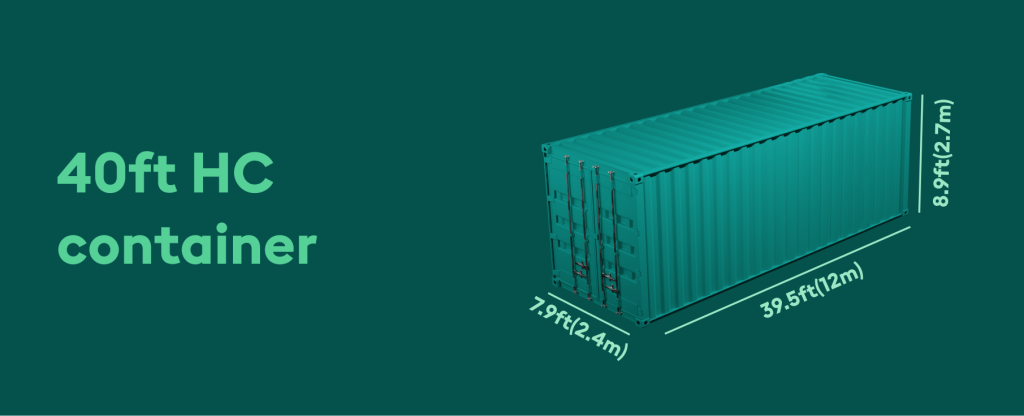
40-Foot High Cube Containers
40-Foot High Cube Containers: Specialized types of shipping containers, reaching a length of 40′, a width of 8′, and a height of 9.5′. The additional height provides extra cargo space, making them ideal for shipping larger or bulkier items without exceeding the weight limits.
With the capacity to carry roughly 67,000 pounds, 40-foot High Cubes are ideal for industries in which lightweight products are in need of storage efficiently, such as textiles, electronics, and furniture. Their higher volume allows better utilization of the space available for shipment, reducing costs per unit.
Made of solid steel, the containers are weatherproof and theft-proof, protecting the cargo during shipment. Their standard design also makes handling and stacking quite convenient, which has become synonymous with international logistics and shipping.
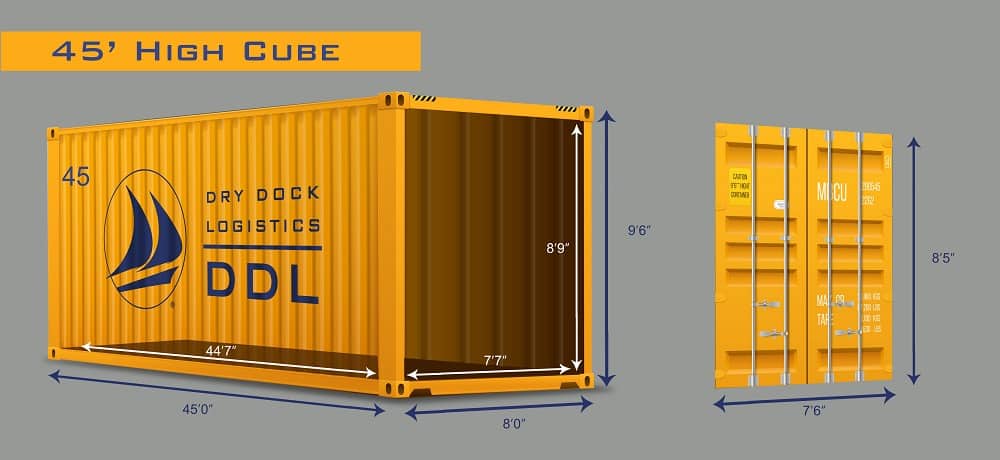
45-Foot High Cube Containers
45-Foot High Cube Containers: These are standard shipping containers elongated to 45 feet in length, 8 feet in width, and 9.5 feet in height. Extra space in length and height provides considerable extra space for cargo in them, making these containers ideal for larger or bulkier items.
The 45-foot High Cubes prove to be extra helpful for lightweight goods or industries looking to have greater volume without extra weight, which this does manage, with a capacity of around 67,000 pounds. Textiles, electronic goods, and machinery therefore usually go in these containers.
These containers are constructed with strong steel and are designed to withstand harsh weather conditions, ensuring that the cargo in these containers will be safe and secure during shipment. Their standard designs ensure their handling and stacking to be pretty easy and compatible with the shipment facilities and installations that have made them the forerunners in international trade and logistics today.
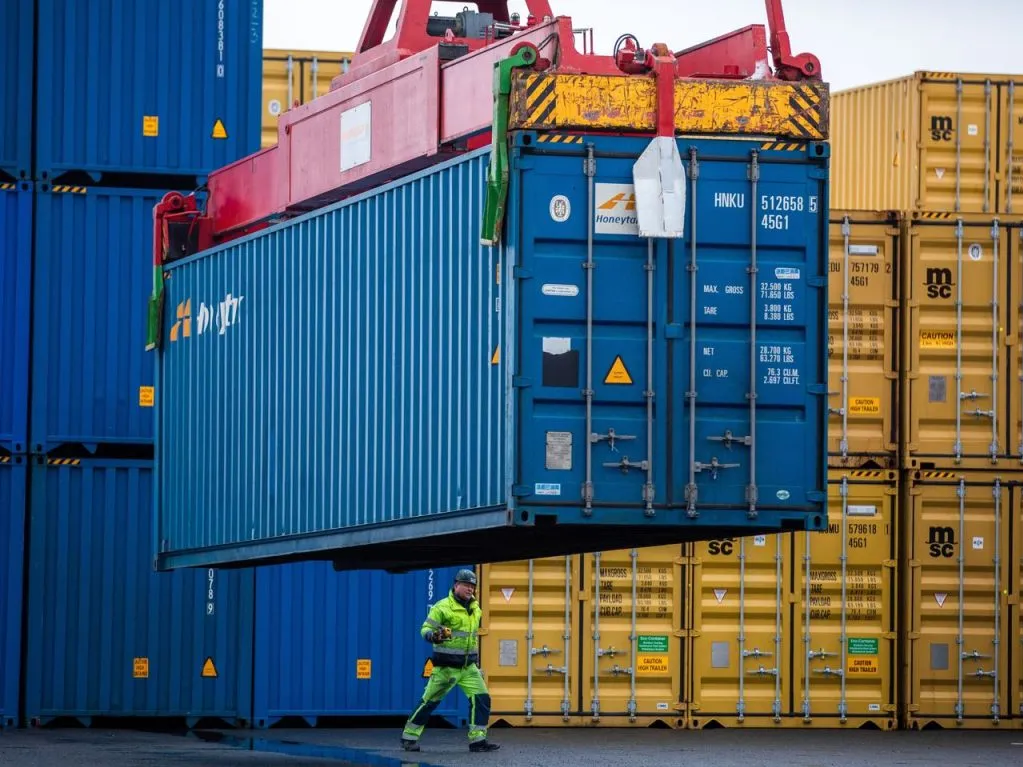
Methods of Shipping Containers
Sea Freight
Sea freight is the most used method in the shipment of containers across borders. It deals with transportation of goods by cargo ships across oceans, hence it cost-effective for big volumes. Shipment through sea takes time compared to other modes of shipment, but it best suits bulky goods.
Full Container Load (FCL)
FCL means that one shipper fills an entire container with their goods. The method is efficient for businesses with enough cargo to fill a container, since it reduces costs and risks of handling, assuring quicker transit times.
Less than Container Load (LCL)
LCL is used when a shipper has less cargo than the quantity required to fill an entire container. Many shippers share space in one container, which is cheaper but takes longer in transit due to the added handling and stops.
Land Transport
Land transport involves moving containers by truck or train after they arrive at ports. It’s crucial for delivering goods to their final destinations efficiently.
Trucking (Intermodal Transport)
Trucking has the advantage of flexibility and is often used for door-to-door delivery. This mode can move containers from ports right to the warehouses with a lot of convenience, especially on short distances.
Rail Transport
Rail transport is quite effective for long hauls and is able to carry large volumes of cargo. This makes it quite reliable in the movement of land containers.
Air Freight
It is the fastest means of shipping cargo, and it’s always used when cargo has to reach a destination in the shortest time possible. It is highly valued and used for items of high value or of a time-sensitive nature, making sure they arrive much faster.
When Air Freight is Used for Container Shipping
Air freight is used for items that have to reach their destination sooner, such as perishable goods, electrical equipment, or urgent packages. It allows for speed in shipment, which is vital for critical needs of logistics, even though it is more expensive.
Container Specifications and Dimensions
The most important factors of evaluation a vehicle or container will include interior and exterior dimensions, weight capacity, volume capacity, and material quality.
Interior and exterior dimensions are important to establish the degree of space availability for passengers or cargo. Knowledge of these measurements ensures the vehicle or container will meet specific needs in personal use or for commerce.
Gross weight capacity has been typically divided into gross, tare, and payload. Gross weight would be described as the total weight a vehicle is safely capable of carrying, its own weight in addition to cargo. On the other hand, tare weight is the weight of an empty truck or container, while payload weight denotes the maximum weight of cargo which a truck or a container is capable of carrying without compromising safety limits.
Volume capacity, normally measured in cubic feet or meters, is about how much space one has for putting things in, which is crucially important if one transports goods.
Material and build quality have a great impact on durability and performance: with high-quality materials, durability and resistance to wear and tear are ensured; therefore, quite important in terms of both safety and functionality. All these factors combined will result in the overall efficiency and reliability of the vehicle or container.
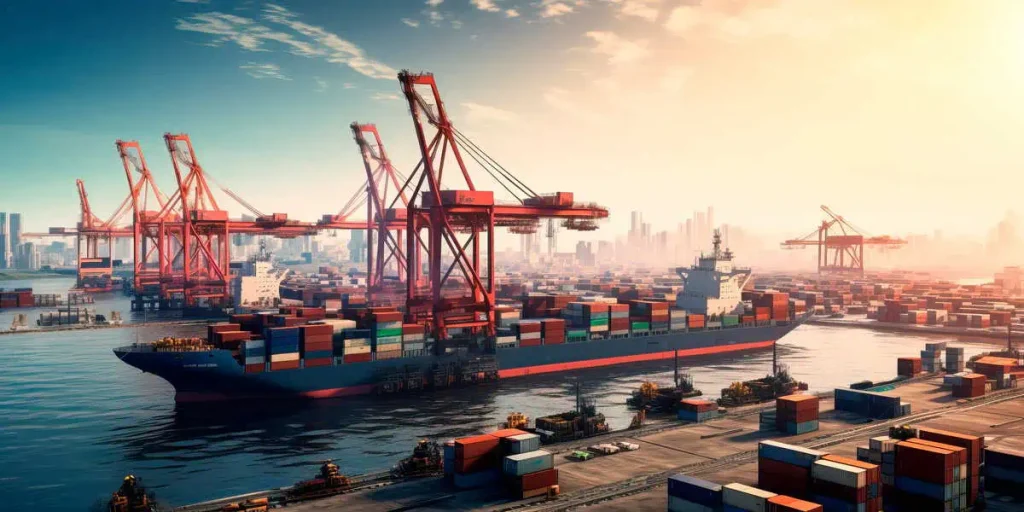
Container Shipping Rates
Shipping containers have become a vital part of international trade. The containers allow businesses to transport their products efficiently across the ocean. Proper knowledge of container shipping rates and prices will be helpful for a company dependent on foreign trade.
Many factors influence the rates of container shipping, like the type and size of the container, the distance factor from origin to destination ports, and the demand and supply dynamics for that shipping route. Other factors that would include price would be fuel, port handling charges, and seasonality, especially in industries like shipping. For instance, prices increase in peak seasons, like before the big holidays, due to demand.
The calculation of the prices in container shipping brings up the critical issue of whether this is an FCL shipment or an LCL shipment. Normally, FCL offers a better rate per unit of cargo because the whole container is utilized for one shipment. In contrast, LCL involves sharing container space with other shipments and may lead to additional handling fees.
These overall rates and prices enable the business to plan logistics more effectively. This in turn enables it to deliver good at the appropriate time and in a cost-efficient way around the world. The price will give one an edge over others in the global arena.
Freight Shipping Rates
The freight shipping rate remains a very important aspect of business and individual life in regard to the efficient transportation of goods. They may depend on the type of cargo, distance to cover, shipping method, and pricing policy adopted by a carrier.
Most of the time, the rates depend on the weight and dimension of the shipment; therefore, heavier and bulkier shipments are more expensive. In addition to that, shipping methods sometimes make a huge difference in their rates: air, sea, or even ground. Air freight generally is considered the most costly due to the speed, while sea freight is considered cheaper for larger shipments.
Other determinants of the freight rate are the price of fuel, demand during peak season, and other services that may be included such as insurance and/or expedited shipping. Shippers can compare the quotes given by different carriers, among other options of freight classes and shipping zones, to get the best possible rates.
Understanding freight shipping rates empowers a business to manage the logistics budget efficiently and ensures that the most economically viable solutions are selected to help them meet their customer expectations with regard to on-time delivery. Correct calculation and, therefore, proper planning would be of high importance in optimization of shipping costs for sustaining competitiveness in the market.
Factors Influencing Freight Shipping Rates
The freight shipping rate is based on the following key influential factors that highly affect the overall cost of moving goods.
distance and route
Distance and route play an important role: as the distance gets longer, the higher the rates tend to become because fuel is costlier and it takes longer. The route taken may also influence pricing, especially when toll roads or less direct routes are chosen.
container type and size
Besides, it is very important to take into consideration the type and size of the container. Different containers may be used depending on the cargo type: from refrigerated units, which would be used for easily spoiled cargo, to general containers used for regular freight. If larger or specialized ones are used, then generally higher rents for their use will also affect the final shipping price.
weight and volume of cargo
The weight and volume of the shipment are equally important. The heavier and bulkier the cargo, the higher the prices likely to be, given it occupies space and requires special resources during shipment. Most carriers have a costing formula where they use the two determinants of weight and volume to arrive at costs.
market demand and supply dynamics
Rates can also be changed by the demand and supply forces of the market. More demand for shipment means that the rates are raised; it could be during peak seasons. If the demand is low, then there is a chance that the rates become competitive. Knowing these factors can help a business make educated choices about shipping strategies.

Methods of Calculating Shipping Rates
Shipping rate calculation deals with the various methods used to calculate the charge for moving commodities. A common method of pricing applied is the dimensional weight pricing, where the pricing of packages takes into consideration the weight and size. Most carriers use a formula that translates the volume of shipment into its weight equivalent for proper pricing of larger items that are lightweight.
Other ways include zone-based pricing where shipment cost depends on the distance from the shipment point to a particular destination. Each zone covers a specific area and the rates are higher the more the distance.
Another way is the flat-rate shipping whereby a single price can be accorded to shipping goods regardless of the weight or distance; hence, budgeting by companies is easier.
While freight class is applied to larger shipments, categorizing cargo based on their characteristics-such as by density, value, or fragility-the knowledge of these methods will enlighten the shipper on choosing cost-effective options to suit their needs.
Flat Rate vs. Per Unit of Cargo
Flat rate shipping allows for one single price for the shipment without considering distance and weight. This facilitates easier financial budgeting. On the other hand, a per unit of cargo pricing depends on each unit’s weight or size. Therefore, this might become more financially economical for lighter shipments.
Per Mile or Kilometer Rates
Per mile or kilometer rates are charged for the distance traveled. It is a very common practice in freight and logistics. The costs grow with increased distance, ensuring that the shippers pay for the actual journey their cargo would take.
Surcharges and Additional Fees
The extra costs over and above the basic cost of shipment are the meaning of surcharges and additional fees. These may include fuel surcharges, toll fees, or charges for special handling that can greatly affect the overall expense on shipping. Understanding these fees is essential for planning accordingly.
Costs Associated with Freight Shipping Containers
Shipping Container Freight Costs
There are a number of costs associated with freight shipping containers that a business needs to factor into its financial budgeting. The costs of buying a container against the cost of renting can make all the difference in financial planning. Buying implies long-term ownership with a higher initial investment, while hiring or renting gives one flexibility without the huge initial cost outlay.
A breakdown of freight shipping costs consists of a number of components. Base shipping cost is the basic charge for shipping goods. Fuel surcharges are relevant to fluctuating fuel prices to make such profitability sustainable for the carriers. THC is for recovering costs associated with loading and unloading containers at the ports. The costs regarding documentation and administration are for processing the shipping paperwork. Insurance pays for loss or damage in transit. Lastly, storage and demurrage charges apply if the containers stay at the ports beyond the agreed limit, adding more to the extra costs.
Advantages
Container Purchase vs. Rental Costs:
Ownership and possible long-term savings are all potential benefits of purchasing containers, while renting offers flexibility and a reduced initial investment required to adapt more easily to changing shipping needs.
Freight Shipping Cost Breakdown:
Understanding the breakdown helps businesses anticipate and manage costs more effectively, leading to better financial planning and decision-making.
Base Shipping Cost:
Knowing the base cost assures shippers they can easily compare quotes from various carriers and know they are getting the best price.
Fuel Surcharges:
These surcharges allow the shipping lines to react to unforeseen rises in fuel costs without compromising service quality.
Terminal Handling Charges (THC):
THC allows the ports to maintain infrastructures and operations at ports and contributes to the efficient loading and unloading processes.
Documentation and Administrative Fees:
The fees ensure that shipment processing is done without delay and in accordance with standard procedures, which minimizes any delays in cargo handling.
Insurance Costs:
Insurance coverage invested in this regard saves the business from potential losses and gives peace of mind while goods are in transit.
Storage and Demurrage Charges:
Such charges help a business to plan in a better way by avoiding any extra costs, after knowing how to manage the usage of containers accordingly.
Cost-Saving Strategies in Freight Shipping
Consolidation of Shipments
Consolidation of shipments refers to the process of putting together many small shipments into one large cargo load to facilitate an economical shipping process while reducing costs. Besides just cutting down transportation costs, it lessens the environmental burden due to the fewer number of trips taken out on the road. Companies can take advantage of bulk shipping rates by consolidating shipments that come from many different suppliers or customers going to the same destination. Besides, consolidation often implies faster delivery times because larger shipments are often prioritized in handling. On the other hand, planning and coordination should be sufficiently considered to make sure that the process is undisturbed, that no delay or problems will occur, and all items have been accurately labeled and documented. The companies who consolidate shipment tend to be more efficient with their logistics towards the benefit of the general supply chain efficiency.
Selecting the Right Container Size
Correct container size selection is vital for both shipment efficiency and cost-effectiveness. A proper container size ensures that cargo will be packed correctly to guarantee minimum chances of damage during shipment. If it is too large, then wasted space results in higher shipping costs because rates are determined by the container’s total capacity. On the other hand, if there is a container size that may be too minute in size, the implication is an increased number of shipments or overloading, whereby penalties must be paid. Companies should take a proper view on the dimension and weight that the cargo demands, together with specific handling requirements when making decisions. Businesses can only consult with logistics experts to see what container size works best for different types of goods, with the view of maximizing shipment and efficiency.
Optimizing Container Load
Optimization of a container load relates to the issue of shipping efficiency and cost. The process requires an intelligent approach to the arrangement of cargo in a shipping container for maximum utilization of space, with a guarantee of safety during flow. Proper loading means avoiding possible damage and reducing the risk of shifting cargo, which may lead to accidents. Weight distribution for the cargo, nature of items for shipment, that is, fragile or perishable among other properties, and the overall dimensions will be considered in the optimization. Some tools, which might be helpful in load planning, will make it easier to perceive the best arrangement and help do necessary calculations to maximize each container in a way that reduces shipping costs. In the end, effective load optimization improves shipping efficiency and helps in preserving better sustainability as trips are not needed more often.
Negotiating with Freight Carriers
The key factors that go into managing shipping costs, as well as ensuring reliable service, are negotiations with freight carriers. Negotiations would encompass discussing the terms, rate, and condition in order to win a better deal for the movement of goods. A business company has to shop for numerous quotes from different carriers in order to have an idea of the prevailing market rate, which can then be used in negotiating. The most important factors a business has to consider concern the transit times, the reliability in services, and any value-added services offered such as tracking or insurance. Building strong relationships with carriers can also yield better deals and improved communication. In addition, being open about shipping volume and frequency might lead to a discount or even more lenient conditions. A good negotiation may literally shelve down a great deal of money on shipping costs, hence optimizing the whole logic in order to have a more profitable enterprise.
Utilizing Intermodal Transportation
It involves combining different transportation modes like trucks, trains, ships, and planes to move goods efficiently. This will enable each mode of transport to give the best out of it cost and time-wise. Goods to be shipped over a long distance may be moved by rail for fuel efficiency, for example, and then transferred to trucks for last-mile delivery. Intermodal transportation also enhances flexibility whereby businesses can adapt to the change in logistics needs and routes. With the use of standardized containers which can be transferred with so much ease between modes, companies can cushion their supply chain operations. Besides, intermodal transport mostly reduces environmental impacts since it optimizes load capacities and cuts down empty miles. On the whole, this can result in improved efficiency, lower costs, and higher reliability in the shipping process.
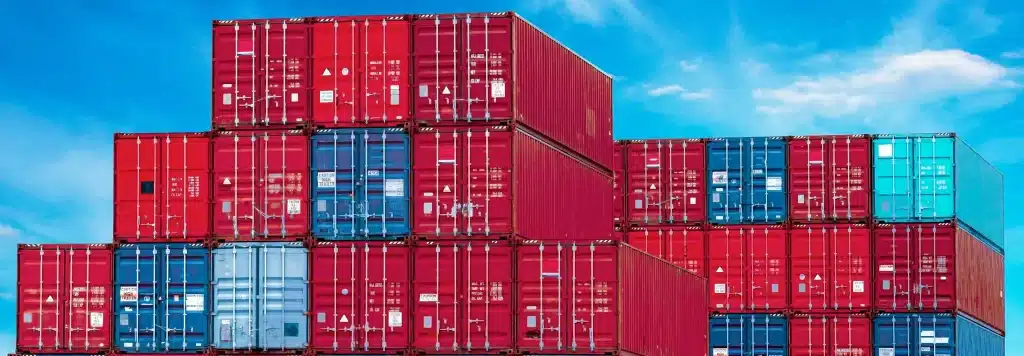
Choosing the Right Freight Shipping Container
The type of freight shipping container to choose would be necessary to pick correctly. It will suit your needs in delivering your goods with the ultimate goal of safe and efficient transportation. First, it is important to take stock of what type of cargo is to be shipped. Other containers serve other purposes: a standard dry container is used for general goods; a refrigerated container is meant for perishable items, and flat racks are meant for oversized cargo.
Next come the dimensions of the cargo and the weight of it. Make sure your items will fit snugly in the container selected and that they can also be within limits as regards weight so as not to have overloading issues. Proper loading techniques can ensure that space is utilized to the maximum while also minimizing damage during transit.
You should also consider the shipping method and destination. Different containers are suited to different modes of transport, including rail or sea. Lastly, you have to consider for what period you need a container: one-time transport or long-term use decides whether you will buy or rent. You shall be capable of making knowledgeable choices on how to boost logistics efficiency and protect investments.
Regulations and Compliance in Freight Shipping
International Maritime Organization (IMO) Regulations
This agency under the auspices of the United Nations sets global standards for the safety, security, and environmental performance of international shipping. From the safety of vessels to crew training, from pollution prevention to making sure that ships operate safely and efficiently, it has quite a wide subject range. The IMO strives for safe maritime practices with minimal environmental impact; therefore, compliance is an absolute necessity for all maritime operators in order to preserve human life and the marine ecosystem.
Safety and Weight Restrictions
Safety and weight are two of the most critical aspects in freight shipping, as both can lead to adverse accidents or damage to cargo integrity. Thus, the regulations stipulate the maximum weight a container or vessel is allowed to have for stability during shipment. This dangerous overloading situation could lead to capsize or shifting of cargo. Besides, meeting these restrictions would protect not only crew and vessel safety but also avoid fines and delays in shipping due to possible discrepancies regarding legal compliances.
Documentation and Customs Requirements
Documentation and customs requirements will pave the way for a smooth transfer of cargo across international borders. This includes bills of lading, invoices, and certificates of origin paperwork. Proper documentation must be in place to ensure that customs regulations are complied with, and this will also be helpful for passing the release and clearance processes. Improper and incomplete paperwork could result in delays, fines, and even confiscation of cargo. Special requirements for each country of destination should be learned to avoid delays and ensure timely delivery.
Environmental Considerations (SOLAS, VGM, etc.)
Most environmental concerns in shipping, such as the Safety of Life at Sea-SOLAS regulations and the Verified Gross Mass-VGM requirements, are basically directed to mitigate the ecological footprint created by the industry. While SOLAS aimed to improve safety in the high seas, the VGM was made to demand accuracy in the declaration of the total weight of containers so as not to bring about accidents from declaring erroneous weights. Of course, these policies encourage sustainability and help take care of marine environments while the shipping industry is responsible and takes care of their carbon footprint.
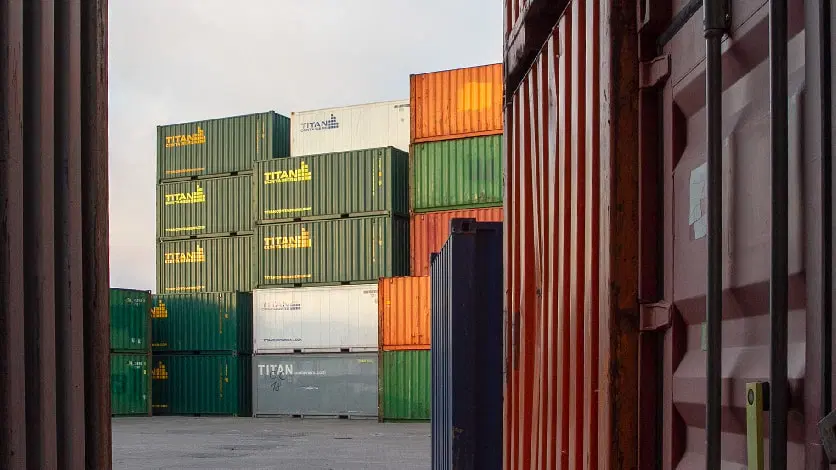
shipping containers for sale.
If you are considering buying shipping containers, there are numerous ways to do that:
Local Suppliers:
There are plenty of companies involved in the sale of new and used shipping containers. Most of these can be found just by searching online with the name of your city along with shipping container suppliers.
Online Marketplaces:
There are also websites like eBay, Craigslist, and many container sales websites that extend the facility towards the people and businesses to buy containers directly from many different types of sellers.
Shipping Lines:
Some shipping companies do sell off their retired containers. This will be a very cost-effective choice, but the availability might be sparser.
Container Manufacturers:
As one can guess, direct buying from one of the above-mentioned manufacturers will ensure you get what you want and need, just in case you seek a specific type or size.
Auction Sites:
Shipping containers are occasionally sold at auctions, and this is also a good opportunity to grab a good deal.
When purchasing, consider condition-new versus used, size, and whether delivery is included. Also always inquire into any permitting requirements or zoning laws as applicable if utilizing the container as storage or converting to a living space.
Conclusion
Eventually, freight shipping containers revolutionized this industry of logistics and transport because one can introduce into it an unrivaled efficiency and flexibility regarding the motion of goods across the world. The standard sizes and solid designs ensure that the cargo inside is well-guarded during transit, while on the other hand, ensuring smooth transfers between modes of transportation. And it’s this need for creative solutions to containers, with the development of further international trade, that’s going to spur on technology and sustainability within this sector. It is here that businesses can leverage these changes to optimize their supply chain and contribute to a more effectively working global economy. Now is a good time to explore how freight shipping containers can take your operations to the next level and help your business move forward.
More questions asked
The BIC code is used as a prefix before the number of each container in the international freight forwarding chain, so if a container is lost or stolen, it can be used to identify it.
A 20-foot freight shipping container can move furniture, appliances of a two-bedroom house, and hold 33 cubic meters, as well as 10 standard pallets or 11 Euro pallets on its floor.
To choose the best size for your cargo, you need to consider three weights: its weight without cargo (Tare Weight), the weight of cargo alone, and the combined weight of cargo and container (Gross Weight).
The average rate of a new 20′ ft container is about 2,000 (GBP), while a used one is 1500 (GBP) or less. The average rate of a new 40′ ft container is 3000 (GBP), while a used one is 2000 (GBP). However, overall costs depend on factors such as destination port, insurance, type of freight forwarding, weight and volume of good, and customs clearance.
Intermodal freight is a type of freight forwarding that uses standardized steel freight shipping containers, allowing goods to be transferred from ship to land without needing to be unloaded and loaded, maintaining the safety of the goods and reducing the risk of damage.
LD-4 shipping container is suitable for the B767 and B777 aircraft. Its maximum gross weight is 1558 kg.
Your rating for this article
